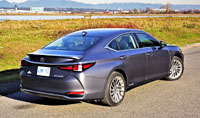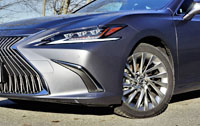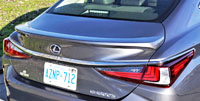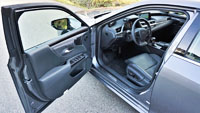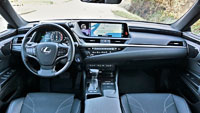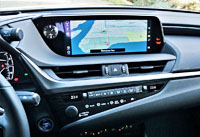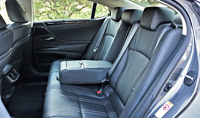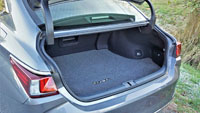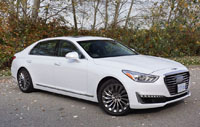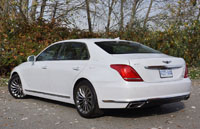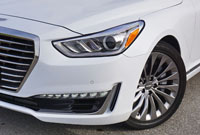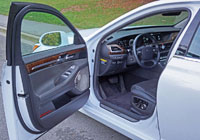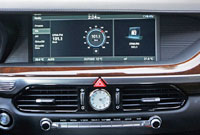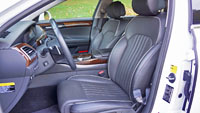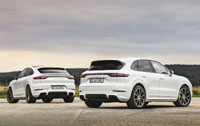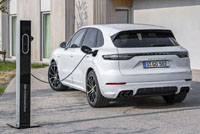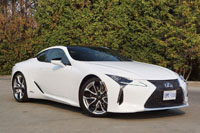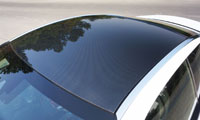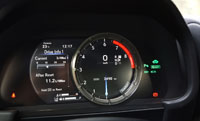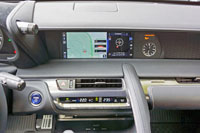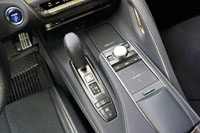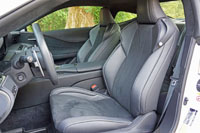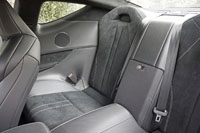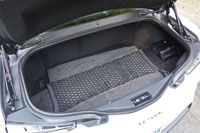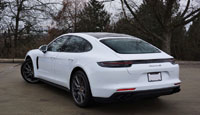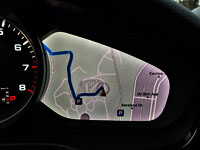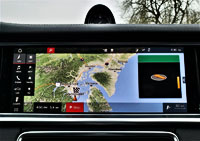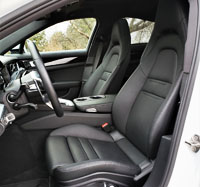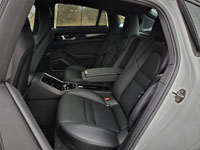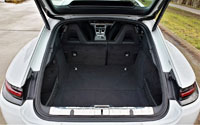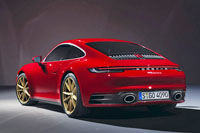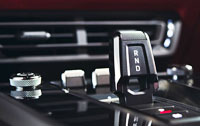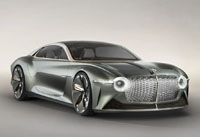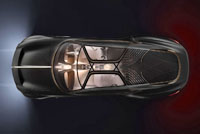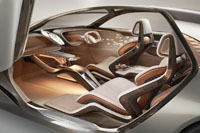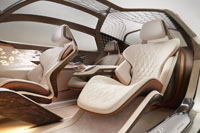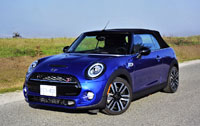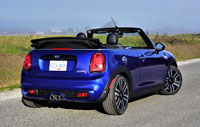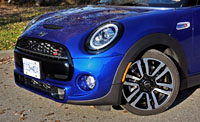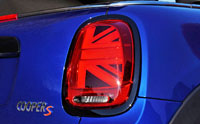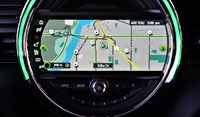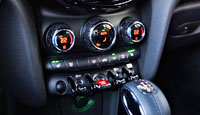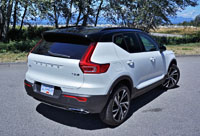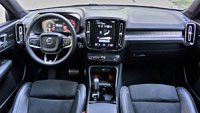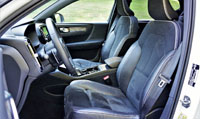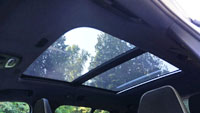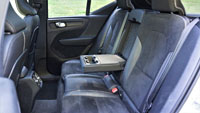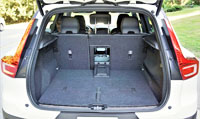
There have been a lot of cancelled domestic sedans as of late, but rest assured this Buick Regal isn’t going anywhere soon.
FCA initiated the process by chopping its Dodge Dart and Chrysler 200 a couple of years ago, which was quickly followed by near simultaneous announcements from both Ford Motor and General Motors that their car lineups would soon be cut back, with the blue-oval and its Lincoln luxury division eliminating every car but Mustang, and GM more modestly cancelling its Chevrolet Cruze, Volt, Impala, Buick LaCrosse, Cadillac CT6 and XTS. With the Chevy Malibu Hybrid slated for cancellation after this 2019 model year, there’s some talk about whether the conventionally powered version will last much longer, but so far this is just gossip.
The Malibu is a very good mid-size sedan that I’d be sorry to see leave, truly competing well against its mainstream volume peers, and that car’s relevance is probably why we still have the Regal. The two share core underpinnings, and while there’s no performance-tuned Malibu SS to match the Regal GS’ vigor off the line or through the curves, it’s a car I could happily live with.
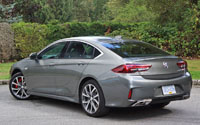
GS trim is top of the line for Regal, so along with plenty of luxury features, its 310-horsepower V6 and other go-fast goodies easily make it one of the sportiest mid-size family sedans available. It’s also not technically a sedan, but rather a five-door hatchback or liftback, Buick choosing to name it Sportback. It’s hard to tell it’s a hatch instead of the usual trunk, but given a little time with one you’ll quickly appreciate how versatile its load-hauling capabilities are.
Speaking of practicality, Buick makes a raised five-door sport wagon/crossover variant (similar in purpose to the Subaru Outback and Volvo V90 Cross Country) for the U.S. market (plus Europe, under the Opel and Vauxhall brands, as well as Australia and New Zealand where the two body styles are sold as the Holden Commodore). In the U.S. it’s called the Regal TourX, and I have to say it’s a smart looking car that I wish we had here, but no doubt it’s not available due to low potential sales. GM’s Chinese division has no problems selling cars, Regals in particular, but nevertheless they chose not to offer the TourX either, choosing to only go with this four-door coupe-like sedan instead.
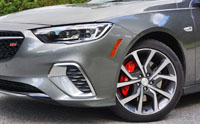
Its styling should be attractive to most, as should its impressive performance, but nevertheless this Regal remains one of the least popular cars in its mainstream volume segment. Alternatively we could classify it amongst premium brands and then it might be considered more of a success. After all, with a base price of $32,045 plus freight and fees it starts $3,000 to $7,000 pricier than most rivals, pushing it closer to entry-level luxury alternatives. It should also be noted that similarly priced volume-branded mid-size sedans do about the same or worse when it comes to sales. This said, the Regal doesn’t measure up to premium status or refinement levels (the General’s Cadillac division fulfills that need), so the unique model’s low sales are understandable (see all 2019 Buick Regal pricing right here on CarCostCanada, where you can also find out about available rebates and dealer invoice pricing that could save you thousands).
The as-tested Regal GS being reviewed here starts at a very premium-level $44,045, and jumps up to $51,700 with all available features (plus a couple of useful accessories), which while very reasonable when compared to similarly sized and equipped premium-branded cars, it’s a big jump upmarket from a loaded up Toyota Camry, Honda Accord or Ford Fusion, these being the top-three sellers in the mid-size sedan segment. Its fully loaded price is only $205 more than a totally optioned out Kia Stinger, mind you, and in fact $1,880 less than VW’s loaded up Arteon.

To Kia’s credit the top-line Stinger is a 365-horsepower twin-turbo V6-powered AWD “hot-hatch” capable of sprinting from zero to 100 km/h in a mere 4.9 seconds, but the GS provides respectable acceleration of 5.6 seconds from standstill to 100km/h, which is actually better than the now-legendary Regal Grand National GNX, and about the same as the lighter weight 265-horsepower Arteon (the VeeDub weighs about 300 kilos or 660 lbs less than this Buick). These sprint times are of course estimates, with some manufacturers more conservative in their claims than others, but the GS’ 3.6-litre V6 engine’s torque rating of 282 lb-ft is likely spot on.
There are plenty of other reasons to place each of these impressive cars high on your shopping list, and many attributes that set them apart from their more conventional family sedan challengers. I won’t be tempted to make this review a full-blown comparison test, despite recently driving all of the above for a week apiece, but instead will solely concentrate on the Regal GS, while occasionally pointing out strengths and weaknesses against key competitors.
I find each of these three cars attractive from a design perspective, so styling will come down to personal preferences. The Regal looks fabulous in my books, its classic lines and overall elegance working well for me, albeit my 50-something age might have something to do with this. I particularly like this GS model’s design details.
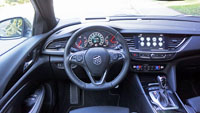
The visual enhancements start with bold red italicized “GS” lettering on the gloss-black mesh grille insert that’s framed by a glossy black surround, which is all underscored by even more piano black trim on lower fascia. The same shiny, inky treatment highlights the lower side window trim and rear valance, this sporty appearance package complemented by aluminum-look accents on the grille, corner grillettes, upper window surrounds, and exhaust finishers. A subtle body-colour rear deck lid spoiler, and a reworked rear bumper design finish off the sporty upgrade.
Open the door and you’d be forgiven for thinking that Buick is channeling the ghost of Pontiac, as you’ll be looking at two of the most aggressive sport seats in the mid-size sedan class, not to mention a contrast-stitched, leather-clad sport steering wheel to match, complete with a flattened bottom for extra spunk. I won’t go so far say the GS’ wheel is as perfectly shaped as the Arteon’s impeccably crafted spokes and rim, or for that matter the Stinger’s shift paddle-enhanced design, but they’re all considerably better than average in this family-focused class. Like the others, Buick provides yet more piano black lacquer trim inside, plus some carbon weave-like inlays here and there, as well as aluminum-look and chrome accents elsewhere, giving the Regal true sport sedan interior design.

A partially digital primary gauge cluster features a red GS insignia on the 4.2-inch speedometer/multi-information display at centre, reminding all this is Buick’s fastest model. The graphic can be swapped for a number of useful functions via steering wheel controls.
On top of the centre stack is Buick’s latest IntelliLink infotainment system, housed in a very impressive high-resolution 8.0-inch touchscreen. Its multiple aqua-green circles on a high-contrast black background look good, and a bit more premium-like than the bright, colourful Apple-style interface in the aforementioned Malibu, which is probably fitting for Buick’s older and slightly wealthier average buyer. The system is easy to use and once again filled up with useful functions, from a big, clear reverse camera including dynamic guidelines, to a user-friendly navigation system with accurate route guidance with detailed mapping, plus all the expected audio features such as satellite/HD radio and Bluetooth streaming, phone and text message info/readouts, another panel for OnStar, a large interface for the two-zone auto HVAC system, etcetera.
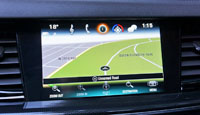
A separate analogue HVAC panel provides quicker-access just below, plus switches for the three-way heated and ventilated front seats, while other items not yet mentioned that came with my Regal GS tester included a heated steering wheel, a head-up display, adaptive cruise control, auto-dimming rearview and driver’s side mirrors, two-way driver’s memory, leather upholstery, an eight-speaker Bose audio system, wireless device charging, a 4G LTE Wi-Fi hotspot, a power moonroof, passive keyless entry, pushbutton start/stop, remote start, auto-leveling LED headlamps with cornering capability, 19-inch alloys with grey-painted pockets, front and rear parking sonar, and the list goes on.
Buick also added a bevy of advanced driver assistance and safety features including autonomous forward braking with collision alert and pedestrian detection, blind spot monitoring and rear cross-traffic alert, lane departure warning with lane keeping assist, and the brand’s first-ever active hood pedestrian safety system that raises the rear section of the hood by 100 mm (3.9 inches) in order to lessen impact and help reduce injury.
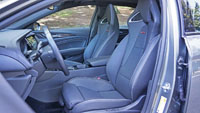
That sporty Regal GS driver’s seat is also wonderfully comfortable, much thanks to four-way lumbar support, an upscale feature that doesn’t even come with some premium-branded luxury sedans. The lower cushions are extendable too, and therefore ideally cup under the knees for added comfort and support, while the sizeable side bolsters provide good lateral support and powered adjustability, making them perfect for just about any body type. Due to plenty of reach from the tilt and telescopic steering column, the Regal also provided an excellent driving position, which isn’t always the case for my long-legged, short-torso frame.
The GS’ V6 idles smoothly when it’s not turning off automatically to save fuel and reduce emissions, a very good thing, while this model’s upgraded nine-speed automatic provided quick, smooth shifts. The entire drivetrain was smooth and effortless to operate around town, on the highway, or when pushed through tighter, windy sections, but I was disappointed to learn that this sporty sedan didn’t include paddle shifters, which would have made this well sorted transmission and fully capable powerplant all the more entertaining. Instead, I pressed the Sport mode button, slotted the gear lever over to the left for manual mode, and shifted away to my heart’s content.
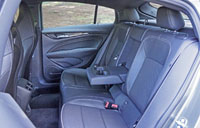
It’s not a Wildcat 445, but the Regal GS isn’t short of enthusiasm off the line, while the gearbox is an ideal match, shifting quick but never harshly, although I found the need of more sport from the model’s Sport mode, so I quickly changed to the GS setting, which adds a bit more weight to the steering and helps the car to feel more engaging overall. I honestly missed having steering wheel paddles, but I nevertheless adapted as required and got the most out of this well balanced four-door when some of my favourite two-lane serpentine stretches goaded me on. The GS suspension is as smooth and comfortable as anyone should want, yet it manages curves well due to active dampers that make adjustments every two milliseconds. The car’s active twin-clutch all-wheel drive system aids fast cornering further, particularly in inclement weather, while its high-performance Brembo brakes perform as boldly as they look. The GS’ fuel economy is ok considering its performance and all-wheel drivetrain, with a claimed Transport Canada rating of 12.4 L/100km in the city, 8.7 on the highway and 10.7 combined.

Of course, the GS isn’t perfect. Its turn signal stalks are some of the cheapest feeling I’ve ever experienced, due to substandard hollow plastics and loose, sloppy fitment, while Buick spent less on premium composite surfaces. There’s simply too much low rent hard plastic on the lower dash, glove box lid, and mid to lower door panels, especially for a car that passes $50k in top trim. The previously noted VW Arteon isn’t all that much better when it comes to the latter, mind you, but the Stinger does a better job posing as a luxury model. Most GS upper surface treatments are finished in appropriately soft-touch synthetics, however, while front and rear seat roominess is more than adequate, with the rear outboard seats almost as comfortable as those up front, but the moulded black plastic panel covering the rear portion of the front console was bulbous and therefore ugly looking, like it was pulled from a much lower rent vehicle, while this issue was made worse due to the car’s rather spartan rear seat features, back passengers only provided two air vents and twinned USB ports.
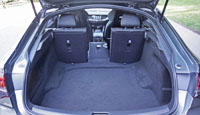
True, this top-tier Regal GS is a bit lacklustre when it comes to features in back. For instance, it’s devoid of heatable rear seats that are included by most others in the $40k-plus category, and these would’ve been great additions for warming up after winter ski trips, the GS being an otherwise ideal snow shuttle thanks to grippy AWD and all-round good performance on twisty mountainside roads, its roomy liftback design, and its versatile 40/20/40 split-folding rear seatbacks that would allow rear passengers to enjoy the more comfortable window seats with skis tucked down the middle. The Regal’s cargo cover is nice and weighty, feeling very well made, while rear seat releases conveniently expand the 892-litre (31.5 cubic-foot) cargo compartment into a sizeable 1,719 litres (60.7 cu ft).
Although the Regal GS could use a few more features and doesn’t quite measure up to its peers when it comes to fit and finish inside, it’s an especially good looking and highly unique offering that’s worthy of your full attention. I’m guessing you’ll enjoy its performance, and appreciate its roomy, comfortable cabin, plus its general practicality, so if you can look past its few shortcomings, it just might provide an ideal compromise between your desire of style and performance and your more pragmatic requirements.
Story credit: Trevor Hofmann
Photo credit: Trevor Hofmann


